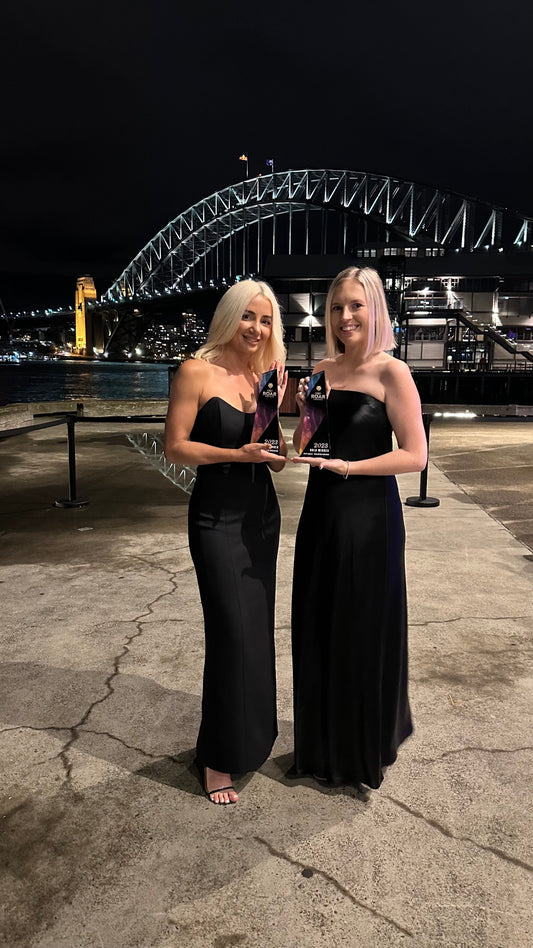Do you know who you are targeting your services or products toward? If not, you may find it difficult to nail down the exact messaging and sales strategy that will generate results. In order to truly make an impact and increase your revenue, you need to have a clearly defined target customer — somebody whose wants, needs, desires, and pain points you are intimately familiar with so that you can create marketing materials that truly resonate and help them realise your business has the solution to their problem.
But what if you don’t actually know how to clearly define your target market? What if every time you try you just end up settling on the same overly general demographic? If this is what you’re thinking, you’re exactly who I wrote this blog post for!
Today, we’ll be discussing how creating a buyer persona can help you better understand your customers so that you can tailor your content, messaging, product development, and services to meet the specific needs of your target audience.
What’s a buyer persona?
Before we can define the term “buyer persona”, let’s go back a little bit to the concept of your target audience. Your target audience is simply an overview of your business’s customer base. It usually includes information about their age, gender, personality, income and more. We break these traits down into two general categories: demographic traits and psychographic traits.
A buyer persona is a semi-fictional representation of a customer that fits within your target market and is based on data and research. Your buyer persona will take customer demographics, behavior patterns, motivations, and goals into account to create a well-rounded picture of your company’s ideal customer.
Think about it like this: if your “target audience” is a team, a “buyer persona” is one of the players on the team.
Why is creating a buyer persona important?
When you are selling a product or a service, it is critical that all components of your business and marketing — content, messaging, offer development, customer experience, etc — are created with a highly specific buyer persona in mind. This is how you can ensure that you are always meeting the needs of your customers.
For example, you might know that your target audience consists of working mums, but without more information about their specific lifestyle and characteristics it will be difficult to gain a full understanding of what informs this customer base’s decision-making process when it comes to buying.
Conversely, if you do have that deeper and more intimate understanding of the exact type of individual you are wanting to cater to, your marketing and personalisation efforts just became a whole lot easier.
Buyer personas 101
Before I walk you through how to create a buyer persona, let’s go over a few important details that will hopefully answer any residual questions you have and shed some light on what the process will look like!
Multiple buyer personas
First of all, know that it is totally normal to have more than one buyer persona that you are catering to within your business. Some major companies may have as many as 10 or 20 different buyer personas that they are attempting to reach. But if you’re new to this concept, I suggest starting small. Aim to create 1 or 2 buyer personas to start. As your business and product portfolio expands, you can add more in.
Negative buyer personas
In addition to your typical buyer personas (representations of your ideal customer), it can also be beneficial to create “negative” buyer personas, AKA representations of who you don’t want as a customer. Having this info on hand can help you “pre-qualify” your customers through your marketing materials and you’ll have the added advantage of being able to segment out the "bad apples” from the rest of your contacts, which can help you achieve a lower cost-per-lead and cost-per-customer.
Types of buyer personas
While it would certainly make things easier if there was a universally recognised list of buyer personas to choose from, that isn’t the case and it shouldn’t be! Every business is different and that means building a unique buyer persona from the ground up.
How to create your buyer personas
I won’t lie to you — this can be one of the more time-consuming tasks you do for your business if the concept is new to you, which is why I’m going to walk you through the exact process I use to help my clients draft buyer personas.
Information-gathering & research
Your first job is to gather information about your existing customers and use that research to identify commonalities that will help you form your primary buyer persona. My favorite practical methods for doing this kind of customer-focused research are as follows:
-
Look through your customer database to track trends about how your customers find and consume your content.
- Make sure that all lead capture forms on your website are optimised to collect important persona information. A great way to do this organically is through quizzes and surveys in addition to more standard forms.
- Consider who you and/or your customer service/sales team is typically interacting with the most. Is there a common denominator (or perhaps a few) that stands out consistently amongst these individuals?
Customer Interviews
One of the most critical steps to establishing your buyer persona(s) is finding individuals to interview so that you can hear directly from your prospective and existing customers themselves. To find qualified interviewees, keep the following tips in mind:
Your current customers are the perfect place to start with your interviews. They’ve already purchased your product/service, so at least some of them are bound to exemplify the traits of your target persona. You’ll want to interview customers who have had both positive and negative experiences with your product or service to form a solid understanding of what your personas like and don’t like. Remember, you can learn just as much if not more from your “less happy” customers.
Another bonus to interviewing your current customers is that you are also making them feel seen, heard, and understood by gathering their feedback. As you involve them in interviews like this (and hopefully use their insights to improve the customer experience), you’ll find that it can have a huge impact on their overall loyalty and satisfaction!
You’ll also want to interview people who haven’t purchased your product or don’t know very much about your brand. A great place to tap into this audience is by reaching out to the people whose contact information you have already collected via your lead capture forms. Send a marketing email offering a high-value incentive (like a gift card with cash on it) in exchange for some of their time.
When in doubt, turn to your network to help you find referrals who fit into your target market and are willing to talk with you. Team members, existing customers, and fellow industry leaders are all people you can solicit for help in this area. This method typically doesn’t yield a high quantity of interviews, but it does tend to result in very high quality interviews, which is always what you should aim for.
In all of your requests for interviews, be clear that this isn't a sales call and you are not going to try to pitch them or pressure them for an hour. You simply want to hear about who they are and what they want.
Try to be as flexible as possible, too — if you make it too difficult to schedule, they likely won’t go to the effort of following through. To make it as easy for them as possible, offer them a wide range of dates and times to choose from off the bat and then send a calendar invitation with a reminder to block off their time.
Finally, aim to interview anywhere between three to five people per persona, although you can always conduct more interviews if you feel it is necessary. After some time, you’ll begin to predict the direction of the conversations and notice consistent patterns — this is a sign that you are truly beginning to understand and know your buyer persona!
Once you’re equipped with the above research, you’ll have a lot of raw, high-value material about your potential and current customers. So — how can you begin condensing it into an organised buyer persona template you’ll be able to refer back to time and time again?
You can ask demographic questions via online surveys or website forms to collect information about your buyer persona’s age, income, location, gender identity, etc.
When you are conducting your market research and customer interviews, your goal is to always ask your customer “what” and “why.” What is currently going on in their life? What are their goals and motivations? Why do they desire these things? What problems and pain points are they facing at present? Why is this impacting their life? Why do they want to change it? Condense this information into bullet points and separate it into two sections: “Goals/Motivations” and “Challenges/Pain Points.” Finally, be sure to tie it all back to how your products and/or services will help them get what they want.
You should have a myriad of real-life quotes from your market research interviews that exemplify who your buyer personas are, what they want, and the concerns that may be holding them back. Compile these quotes into a list and use your deductive reasoning skills to come up with the top 3-5 most common objections you typically see from your buyer persona. Then, work with your sales team to create a strategy for how to handle those objections in the future.
In your buyer persona document, you should clearly define the nitty-gritty behind the messaging you will use to reach potential and existing customers. This includes the tone and register behind your brand communications to your audience as well as a more general elevator pitch that positions your product or service as a solution your persona will deeply crave.
Label each buyer persona you create with a name (i.e. “Working Mum Wendy”) to allow for internal clarity amongst your team members in case you start to add on more personas later down the line.
Final note
One of my specialties as a business and marketing consultant is helping my clients truly figure out who they want their products/services to solve a problem for and then showing them how to use that knowledge in their marketing to create a wildly successful business. If you’re looking to explore buyer persona creation on a deeper level, I’m your girl. I’m currently taking on strategy intensives on a first-come, first-served basis — learn more about how to secure your slot with me here.





